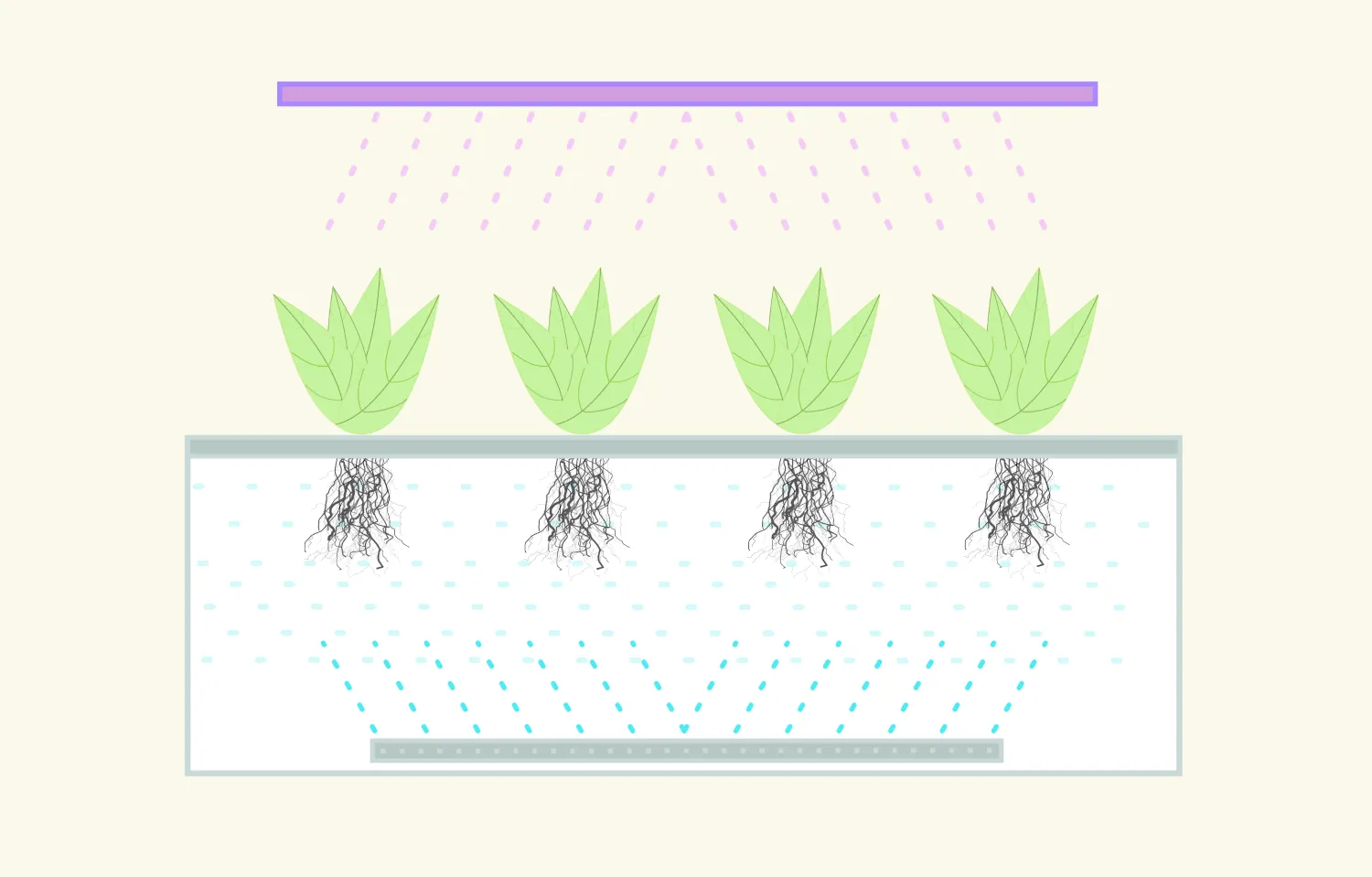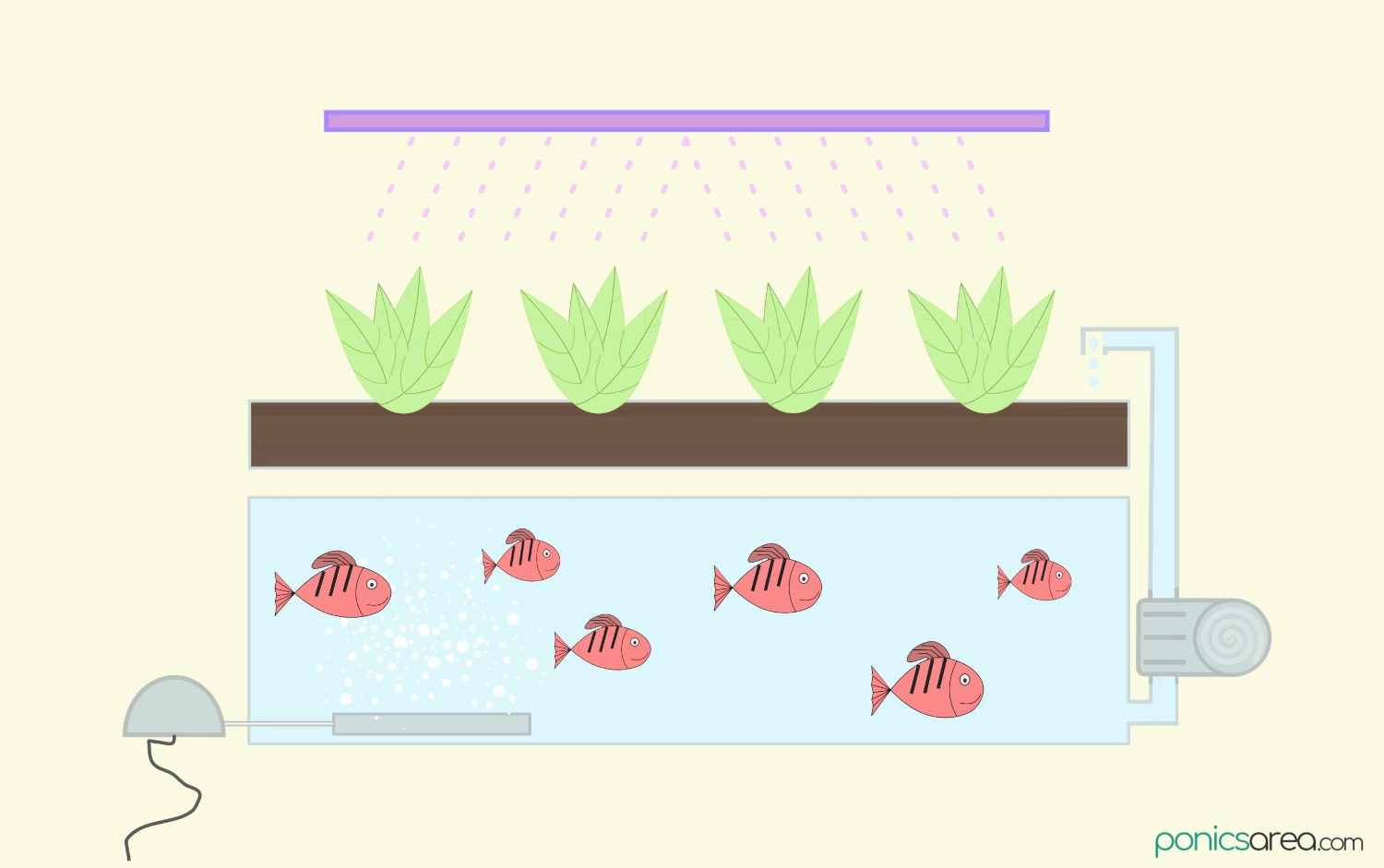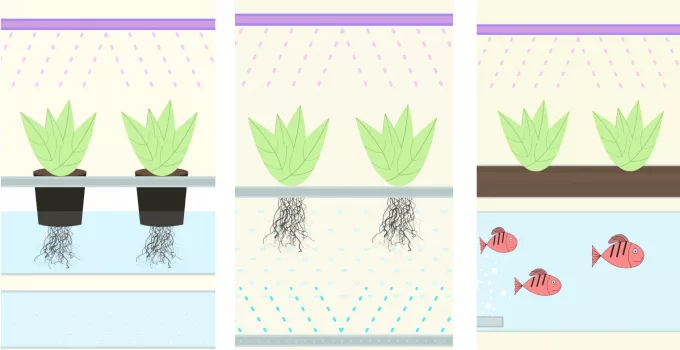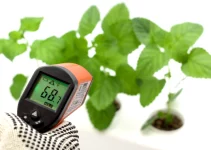What is the purpose of a hydroponics vs aquaponics vs aeroponics debate? Well, it’s more like a complete guide on these 3 systems than a debate.
The purpose is to talk about some amazing ways to grow plants without soil. All 3 are fascinating. I think that is the best reason for talking about hydroponics vs aquaponics vs aeroponics.
Table of Contents
Hydroponics vs Aquaponics vs Aeroponics: Common Features
Let’s just establish what they have in common and what makes them so amazing. By establishing what they have in common, you’ll understand what this article will be about.
Because a big part of this article on hydroponics vs aquaponics vs aeroponics is all about determining just how different hydroponics is from aquaponics. I just mention the two because aeroponics is a component of hydroponics.
In this hydroponics vs aquaponics vs aeroponics guide let’s make one thing clear: aeroponics is a big part of hydroponics but not the same thing can be said about aquaponics. Aquaponics doesn’t belong to hydroponics, it’s not a hydroponic system, like aeroponics is. Aquaponics has its own type of systems.
The outline on hydroponics vs aquaponics vs aeroponics:
- all 3 are an alternative to plants being grown in soil
- hydroponics is represented by a collection of systems, even the Kratky method with mason jars can be called a hydroponic system, albeit a very basic one
- aeroponics is the 6th hydroponic system so, it belongs to hydroponics but it’s quite different than the other 5
- what makes aeroponics different is that the roots of the plants are exposed, there is no growing medium for the roots to be in, unless we consider air to be the growing medium
- aquaponics utilizes grow media, just like the rest of the hydroponics systems do
- aquaponics, unlike the other two, is a method to grow both plants and fish – that’s actually the main difference, the fact that fish are both an integral part of the system because they feed the plants, the fish replace the hydroponic nutrient solution, and the fact that this is a method of fish farming in combination with plant production
- surprisingly, you can also make a mason jars aquaponics system, just make sure to pick a small fish like a guppy or goldfish per jar and use very large jars so they don’t suffocate in a small space
What Is Hydroponics?

Illustration of a hydroponics system
Hydroponics is the alternative to classical agriculture where crops are grown in soil and they take their moisture, nutrients, and support from the soil.
Hydroponics is the amazing ability of growing crops just with water and liquid nutrient solution. The water and the nutrient solution are kept in a reservoir.
It’s truly impressive and it has become increasingly popular among both commercial and normal household growers.
For normal households that major advantage and attraction is that even those who live in a small apartment can grow plants all year round. They can do so by simply buying a hydroponic kit for beginners.
The joy and rewards that hydroponics can deliver can be experienced fully by those with large spaces, quite a bit of time on their hands, a passion for alternative agriculture, and a bit of knowledge for building their own hydroponics systems.
Commercial benefits
On the industrial side, the advantages that hydroponics can bring are substantial and they have become a full focus for more advanced societies, like Singapore:
- less water consumption (as much as 10 times less water than soil crops)
- higher yields, greater plant density
- a much better choice for the environment
- no need for herbicides
- reduced need for pesticides since growing spaces are sealed off
- a valid replacement in places with degraded soil
- hydroponics is seen as the solution to feeding an ever expanding global population
- plants can grow 40-50% faster and can produce 30% more yield compared to soil crops
Types of hydroponics systems
The other main hydroponics systems, besides aeroponics, are:
- DWC (deep water culture)
- wicks
- NFT (nutrient film technique)
- ebb and flow
- drips
As you can see, aquaponics is nowhere on the list because it’s not a hydroponics system. It’s actually a hybrid and I’ll expand more on that in a moment.
Well, some of the systems that I’ve enumerated above can actually be adapted to work as aquaponics systems. The DWC, the NFT, and the ebb and flow can be transformed into aquaponics systems by adding fish to the tank/reservoir.
But let’s first expand on what is aeroponics since this is a hydroponics system, an integral part.
What Is Aeroponics?

Illustration of a aeroponics system
As I’ve mentioned right in my introduction, aeroponics is a hydroponics system.
The difference between these one the other 5 systems is that aeroponics, like the name suggests, is the one where the roots are actually suspended in the air.
For the other 5, the growth media is a solid substance (rockwool, coco coir, perlite, hydroton and so many others). It’s the growth medium that offers moisture, nutrition, and support. It replaces all the responsibilities that the soil has.
When it comes to aeroponics, the roots are suspended in the air.
How do they get water and nutrients? Since it’s a hydroponics system, it’s still one where plants are grown in water and nutrient solution and not in soil.
There is a fine mist activated by a timer that sprays the roots in order to feed them and prevent them from getting dry.
This is a system that relies on technology, on perfect timing for the timer and on not being any electricity shortages.
Aeroponics is definitely loved by commercial growers but it’s not a system that many attempt to build at home by themselves.
Beginners, normal people who want to grow crops hydroponically inside their house or in a garage or in a small greenhouse, usually start with DWC or wick systems and then maybe upgrade to NFT, drips or ebb and flow.
Aeroponics components
- reservoir for storing the water and the nutrient solution
- the extra water and nutrients that’s not used by the roots gets delivered back into the reservoir, there’s no waste
- net cups for suspending the roots of the plants in the air
- water pump for pumping the water through the misting nozzles
- timer for activating the water pump
- it’s actually called a repeat cycle timer or a recycling timer – growers can experiment with the timing, some set it 1 min on and 5 mins off, others recommend 5-10 seconds of mist every 3-5 mins, this is definitely not something set in stone
- grow lights
Aeroponics benefits
According to NASA, aeroponics can:
- reduce water usage by 98%
- fertilizer usage by 60%
- pesticide usage by 100
It can do all that and still maximize crop yields. All the 3 methods presented in this hydroponics vs aquaponics vs aeroponics discussion have the purpose of maximizing crop yields without using too much resources or wasting too much.
Disadvantages
- constant monitoring for: pH levels since there’s no growing medium (air is the growing medium), nutrient density ratio
- no room for power outages – commercial growers need a backup power supply
- expensive method to set up and a need for technical knowledge
- regular disinfection of the root chamber
- can be noisy in small quarters
What Is Aquaponics?

Illustration of a aquaponics system
Aquaponics definitely involves water. So, in our hydroponics vs aquaponics vs aeroponics debate that’s the massive feature they have in common.
But it features an extra component that, if you know absolutely nothing about these systems, will definitely surprise you.
If you want to check out how some of these systems look like and function, check out my reviews on aquaponics kits.
Aquaponics: hybrid between hydroponics and aquaculture
Aquaponics is actually a hybrid between hydroponics and aquaculture (cultivation of aquatic animals like fish). So, it’s still related to hydroponics.
In fact, hydroponics and aquaponics have in common the reservoir as a component.
However,
The reservoir contains fish. Live swimming fish are the replacement for the nutrient solution. They are the ones that actually create the nutrient solution so you don’t have to worry about buying liquid nutrient or making your own from NPK fertilizer, calcium nitrate and epsom salt.
A symbiosis is created between the fish and the crops. An ecosystem is established where the plants thrive thanks to the fish. It’s not something that most of us think about when thinking of methods for growing vegetables.
The fish are the source of the nutrients for the plants, their waste (feces) to be more exact. They are the ones that produce ammonia rich waste.
Ammonia levels have to be monitored in order to not harm the fish. High levels of ammonia will kill the fish.
In aquariums, the ammonia is neutralized by filters and a certain volume of water needs to be replaced daily. With aquaponics, the ammonia is converted into nitrates (plant food).
Aquaponics works because the plants absorb the nutrients and process the ammonia.
However, it’s quite the lengthy process. It will take about half a year before the system becomes self-regulating. It’s at this point where both the plants and the fish begin to thrive. This is the point where the maintenance becomes easier and not a lot of close monitoring needs to be done anymore.
Aquaponics components
- fish tank and obviously fish
- the most popular species of fish used in aquaponics is tilapia but there are others that can be used: trout, carp, channel catfish, largemouth and striped bass, Arctic char, goldfish
- grow bed with net pots for housing the plants (like it happens with the nutrient film technique system)
- growing medium – for aquaponics, the best grow media (hydroton, gravel, lava rocks, growstones) is a bit different than the ones for hydroponics, expanded clay aggregate and gravel are the two big common ones
- the grow bed with net pots & growing medium can be replaced with Styrofoam rafts & net pots floating on the waste water (similar to a deep water culture system but with fish)
- water pump for delivering the water in the grow bed
- tubing – both for pumping up the water and for returning the excess water from the grow bad back the reservoir and the fish
- air pump to circulate oxygen for the fish
- grow lights
- if you are interested in building a DIY aquaponics system, there are plenty of YouTube videos to guide you
- if you’re building an ebb and flow aquaponics, you’ll also need a timer
How aquaponics works
- the waste water is fed into the grow bed where the plants are set up in growing medium
- the nitrifying bacteria in the growing medium breaks down the ammonia into nitrites and then nitrates, which is what makes plants grow
- the roots will take the nitrates and then the clean water is returned to the reservoir
- there’s no wasted water, which is a major advantage for aquaponics
Aquaponics benefits
- growing both fish and plants at the same time – those who are interested in raising both have found the best system for them in this hydroponics vs aquaponics vs aeroponics debate
- recirculating ecosystem – the water is returned to the tank
- no need for chemical fertilizers
- the nutrients from the waste water are steadily fed to the plants so there’s no need to top off the nutrient solution, like it happens with hydroponics & aeroponics, so there’s no additional cost incurred in this area
- sustainable & environmentally friendly
- the perfect hybrid between hydroponics and aquaculture
- utilizes less water than aquaculture
- rapid plants growth
Disadvantages
- in the winter, the system needs to be placed in a warm room to keep the water from freezing so, there will be potentially additional cost for heating
- knowledge about fish care
- even with aquaponics, you still have to monitor the pH of the water – actually a recommended pH that is tolerable for fish, plants, and nitrifying bacteria is between 6.4 and 7.4; in hydroponics & aeroponics the pH range is between 5.5 and 6.5 (5.8 to 6.0 on industrial scale)
- calcium, potassium, iron might need to be supplemented
Hydroponics vs. Aquaponics vs Aeroponics: Plants
The most popular plants to be grown in all 3 systems are leafy greens and all kinds of herbs.
Cucumbers, tomatoes, peppers, strawberries are also a popular choice.
With hydroponics the options can even be extended to onions, carrots, potatoes, leeks, radishes but plants that grow underneath the soil are more difficult to be hydroponically grown.
Hydroponics vs. Aquaponics vs Aeroponics: Which One is the Best for Beginners?
I think that with everything that I’ve talked about above in this post on hydroponics vs aquaponics vs aeroponics, you might already know the answer to which is best for beginners.
Normal household consumers start with taking an interest into either DWC (deep water culture) or wicks systems. These two are the easiest to build and don’t require a lot of knowledge. Some might also be interested in the Kratky method.
The components for a DWC are some of the cheapest and very easy to find in a lot of places: reservoir (can be an old aquarium, a tank a plastic storage box or even buckets), air pump, air stone, tubing, net pots with growth medium (hydroton, also known as expanded clay aggregate), a raft (can be polystyrene), grow lights, nutrient solution.
If they are better at building things, have a bit of experience with both agriculture and DIY, they might jump right into building a NFT, an ebb and flow or even the slightly more complicated drips system.
That tells us one thing: in the hydroponics vs aquaponics vs aeroponics debate hydroponics is the preferred option for beginners.
Aeroponics is the 6th hydroponics system but not a lot of normal consumers are inclined to building one and I can totally understand why. It is complicated and it involves the risk of failure from circumstances that are not dependent on the grower (power outage).
That leaves aquaponics. I will assume that bringing fish into the equation is not exactly something that many people want to do. Most of us search for simplicity and that’s what I wanted to transmit with my analysis on hydroponics vs aquaponics vs aeroponics.




